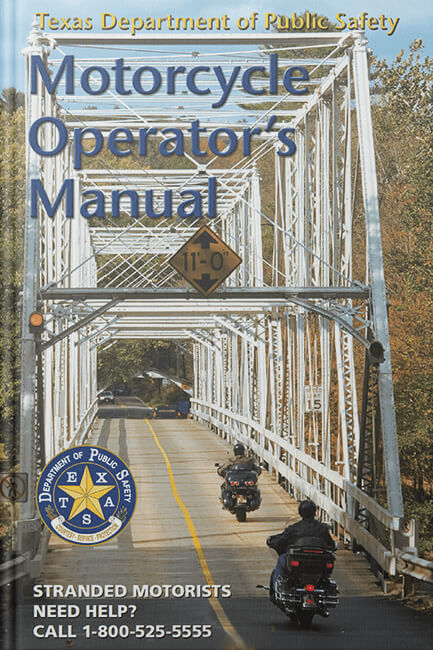Texas Motorcycle Manual Driver's Manual
To make studying easier, the Texas DMV handbook 2025 edition is available in multiple languages and comes with an audio version. Get interactive support with our AI assistant to clarify any complex terms.
Select your language
Texas Motorcycle Manual Online 2025
Riding a motorcycle can be an enjoyable experience.
However, the reality is that motorcycles are potentially dangerous machines. Unfortunately, in the event of a collision, the motorcyclist will often receive more severe or fatal injuries.
The Texas Department of Public Safety recognizes this and has put out the Texas Motorcycle Operator’s Manual, which is an invaluable handbook for the novice rider. It contains information that will aid you in your licensing tests, as well as helping you be a safe, responsible rider. This TX Manual is available for free at any licensing office or as a free download below.
Preparing to Ride
Pre-ride practices can determine whether you have a safe ride or not. Before getting on the road, it’s recommended that a rider do the following:
- Wear the right gear – In order to prevent serious injury, you should wear an approved helmet, face/eye protection and protective clothing (e.g. jacket, pants, boots/shoes, gloves, etc.).
- Become familiar with the motorcycle – Riders should know everything there is to know about their motorcycle. This involves reading the manual, getting familiar with the controls on your bike and keeping it in good condition.
- Check motorcycle equipment – It’s crucial to identify any potential problems before getting on the road. The Manual recommends that you make a complete check of your motorcycle before every ride.
- Be a responsible rider – Responsible riders are aware of how they can create or prevent hazardous conditions on the road. Such riders are sure to be visible, communicate their intentions to other riders and generally carry out the practices of defensive driving.
Collisions
Getting involved in a collision is every motorcyclist’s worst nightmare. According to national studies, most motorcycle crashes involve riders who:
- Underbrake the front tire and overbrake the rear
- Do not separate braking from swerving, or did not choose swerving when it was appropriate
Thus, having some critical skills can help you be prepared and know how to carry out crash-avoidance maneuvers. Knowing when and how to stop and swerve are two of the most important skills to master.
Are you ready?
The knowledge test determines if you’re aware of the basic road rules and regulations. After careful review of the Texas Motorcycle Operator’s manual, you should be able to answer the following questions correctly:
- What should you do if you get a flat tire while riding?
- When should you wear reflective clothing?
- What should you do to reduce your reaction time?
- When do more than half of all crashes occur?
